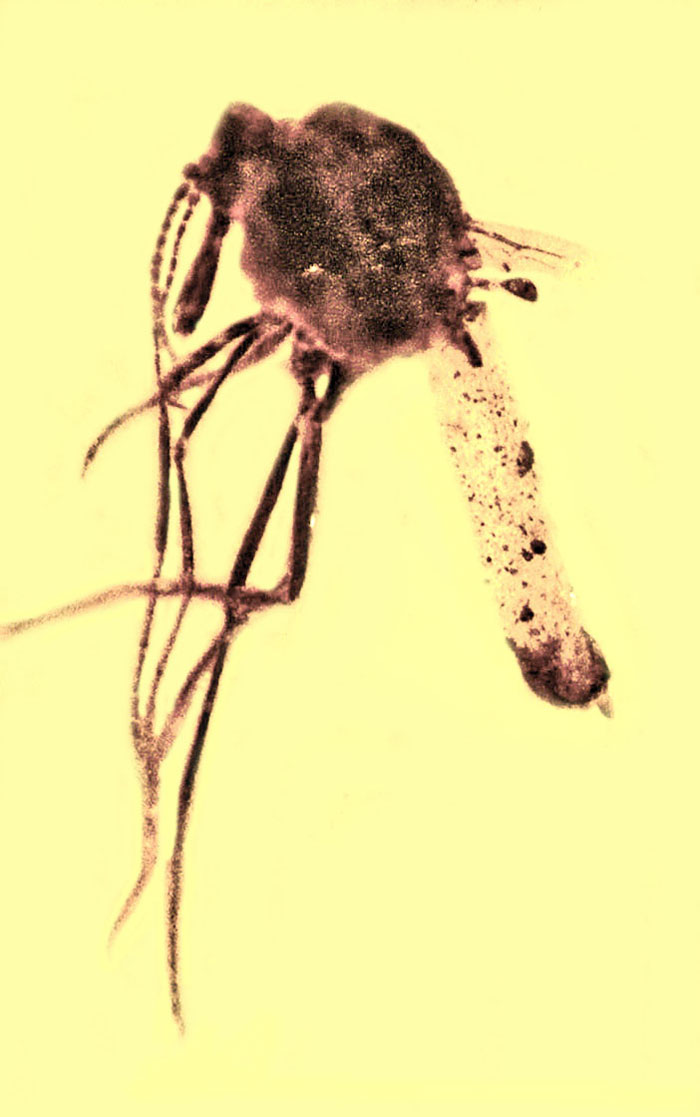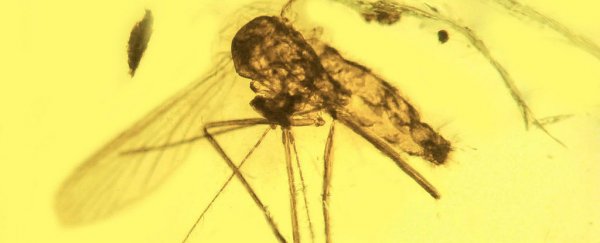The most recent estimates from the World Health Organisation suggest there were more than 200 million cases of malaria in 2015, with some 438,000 lives being lost to the deadly disease last year alone.
While progress towards a widely available vaccine inches closer, a new study illustrates just how long this ancient killer has been plaguing the planet – and it's much farther back than you might think. According to entomologist George Poinar Jr. from Oregon State University, the origins of the disease can be traced back to the prehistoric era, meaning dinosaurs would have probably ranked among its first vertebrate hosts.
"Scientists have argued and disagreed for a long time about how malaria evolved and how old it is," said Poinar. "I think the fossil evidence shows that modern malaria vectored by mosquitoes is at least 20 million years old, and earlier forms of the disease, carried by biting midges, are at least 100 million years old and probably much older."
Malaria in its modern form is thought to have evolved much more recently – somewhere between 15,000 to 8 million years ago – and is carried by female Anopheles mosquitoes. But Poinar suggests that ancestral strains of today's disease could have been spread by other insect vectors – such as biting midges.
If he's right, ancestral malaria could have been shaping animal survival and evolution on Earth from a much more distant point in time than was previously thought.
 Oregon State University/Flickr
Oregon State University/Flickr
In a new paper published in American Entomologist, Poinar reports fossil evidence of an early mid-Cretaceous female biting midge of the extinct genus Protoculicoides, which appears to have been infected with the malarial parasite Paleohaemoproteus burmacis.
In the image above, the dark lumps to the lower right of the insect are oocysts – spores that transfer the malarial parasite – preserved in Myanmar amber.
Poinar suggests that other ancient insects, such as sand flies, mosquitoes, and tabanids, could have also been malarial vectors. But of these, biting midges are the most ancient, with fossil records dating back some 140 million years, which could mean they were the first insects to carry ancestral malaria.
While Poinar isn't claiming an ancient form of malaria actually wiped out the dinosaurs, he does think prehistoric reptiles' exposure to the disease through insects such as the biting midge would have had an effect on dinosaur species during the period.
"There were catastrophic events known to have happened around that time, such as asteroid impacts and lava flows," said Poinar. "But it's still clear that dinosaurs declined and slowly became extinct over thousands of years, which suggests other issues must also have been at work. Insects, microbial pathogens and vertebrate diseases were just emerging around that same time, including malaria."
